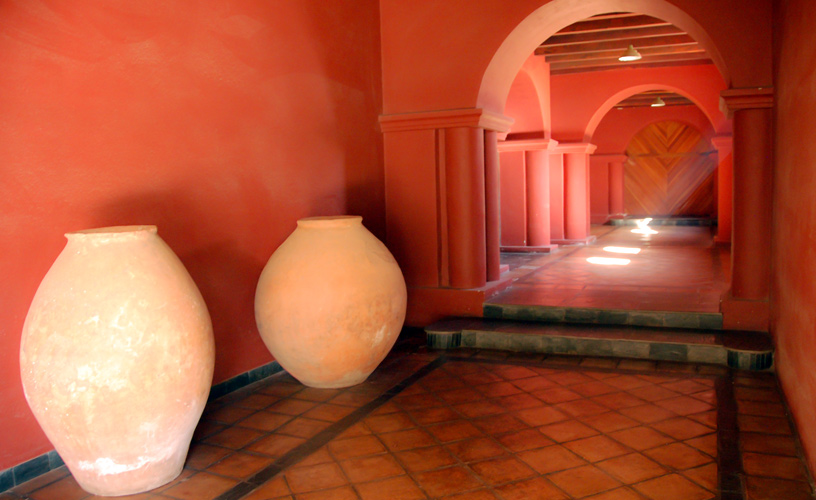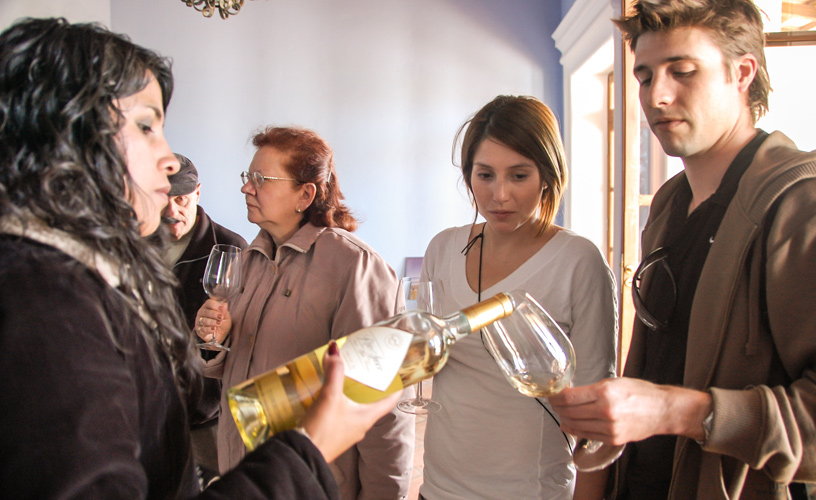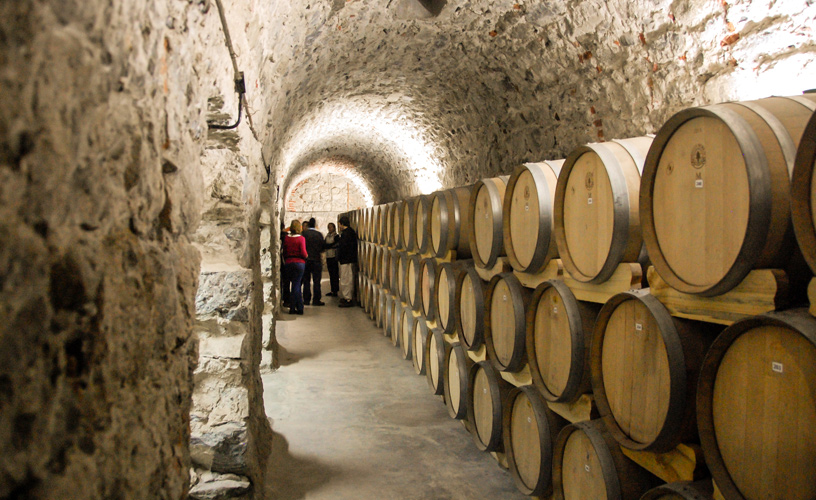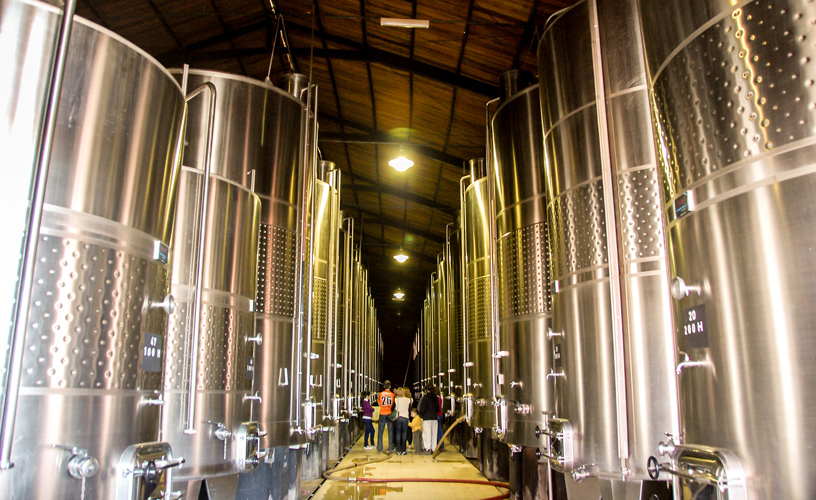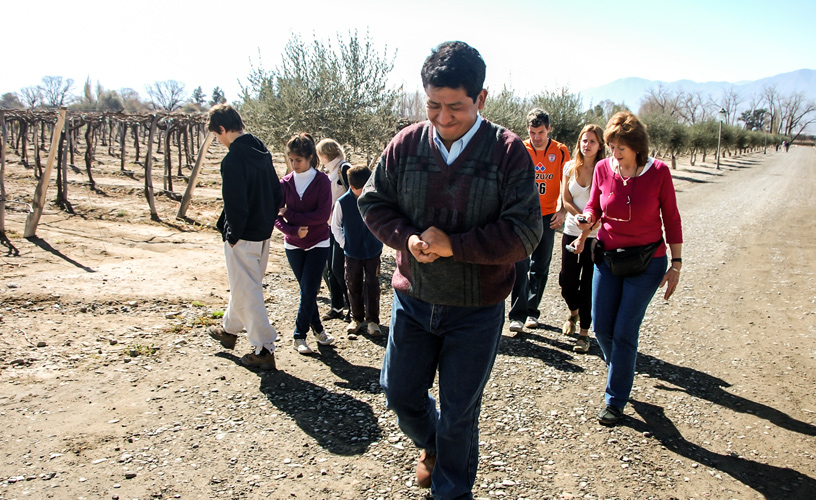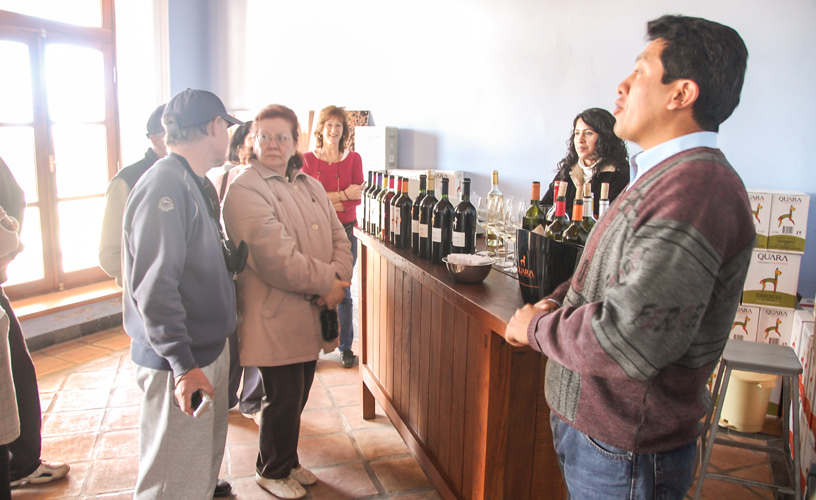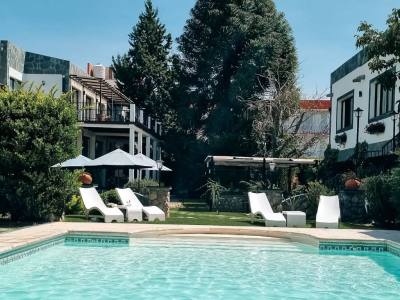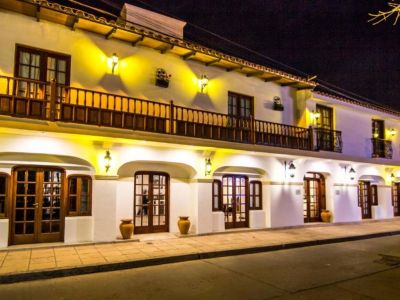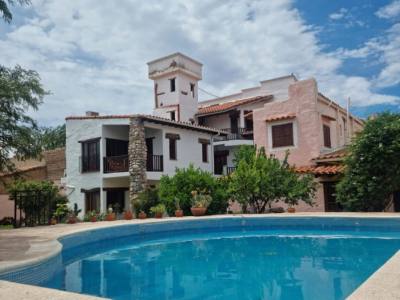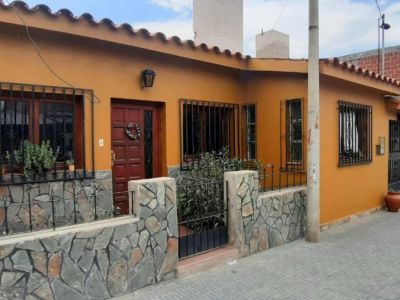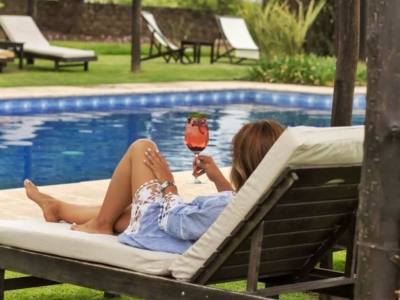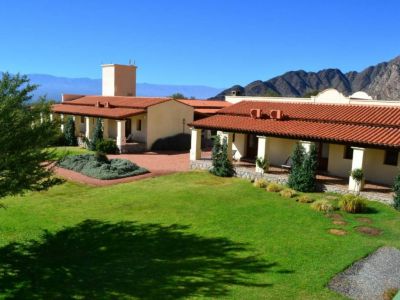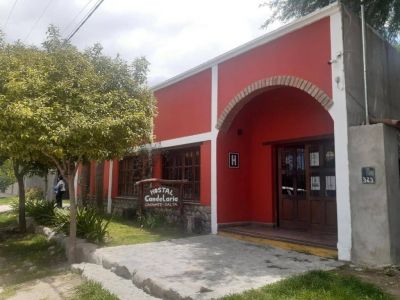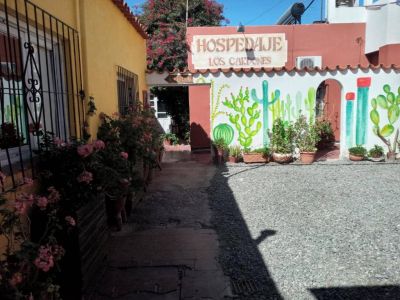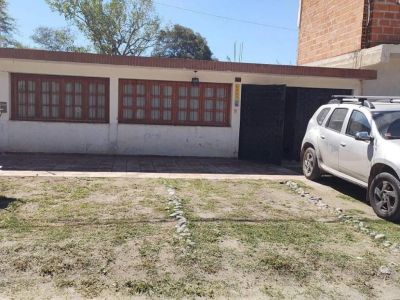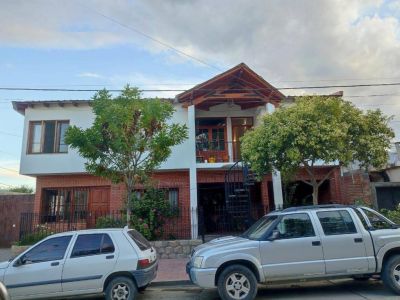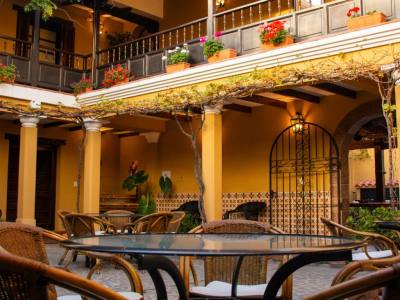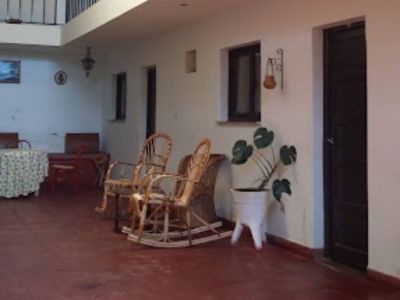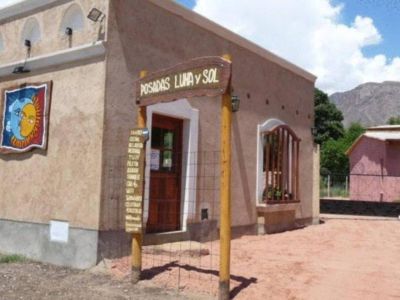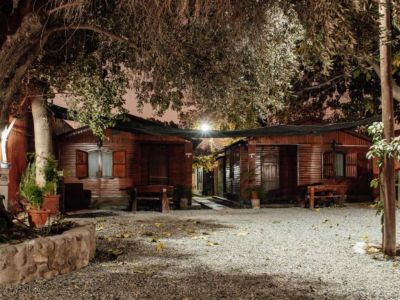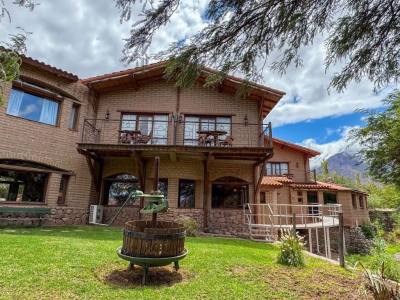Politeness, a certain feeling of friendship and much interest in showing the love with which they make high-quality wines represent the essence of the tour around this winery.
In our visit to Cafayate following the Salta Wine Route, we could not help a visit to Lavaque Winery. At first sight, an impressive venue in a place privileged by nature.
As we waited for our guided tour to begin, we went for a walk to see the winery façade. We were astonished by its wonderful architecture, with colonial influences. Sunshine and good wine are present at each corner and there are also vestiges of elements used to make wine in former times.
Other visitors arrived soon afterwards and all of us were welcomed by our guide: Juan Luna, the second enologist in the company.
Intensity and Harmony
From the very beginning, the conversation was friendly and interesting. Juan wanted us to enjoy this occasion intensely and with all our senses. He anticipated how interesting it is to make wine: it is impossible to get good wine from bad grapes. He also made it clear that a great grape may produce low quality wine due to technical blunders. Both circumstances must be in perfect harmony.
Cafayate has essential features to obtain good harvest: poor soils, good altitude, and extreme temperature variations between day and night. Due to the low annual rainfall regime, the soil is watered with added nitrogen through planned dripping.
We learned that the oldest vineyards give more stable wines. The new vineyards are not harvested until their third year, but quality will not be enhanced until the seventh year. The harvest is done between February and May, the period when the place is most busy.
The clusters are harvested by hand and packed in boxes to be taken to the press area. Once there, the stainless steel mill crushes the skin and the seeds. The juice obtained is immediately cooled down as a necessary condition for the grape to preserve its properties.
Changing the Grapes
As we went through the fermentation room, Juan explained that the tanks before us contained 40,500 liters each and that they were used to store the liquid to which the yeast is added to change the sugar of the fruit into alcohol. Also in this stage, the temperature is controlled twice or three times a day. After 25 to 30 days, it turns into wine.
Somebody asked Juan whether the technicians used any particular recipe and if the computer takes part in any stage of the process. He answered that it is the task of the enologist to balance each stage of the winemaking process. The grapes are not identical every year and neither do they receive the same amount of light, wind or rain while in the plant.
Silence and darkness welcomed us at the underground cellar, where the wine stays for a long time in contact with oak. There is a constant temperature of 14 ° and the aroma of vanilla prevails, as it is the natural component of the wood in the casks. Age-worthy wines are stored here. Time, far from making them go bad, enhances their properties, especially if they are good wines.
Afterwards, wine is bottled. Age-worthy wines are aged in the bottle for a while. Others are launched to the market. The annual production of the winery is estimated to be 4,000,000 bottles.
Game of Similarities
The time had come for the most longed-for stage in the entire process and Juan invited us into the tasting room. In a very simple and friendly way, he made us compare the wine styles, ages or aging time with our own age. Once again, we exercised all our senses to appreciate the character of each wine served.
When it comes to young wines, their strength, color, aroma and intensity override our senses, just the same way a 20-year-old would. Another wine line, with some wooden touches, experience, serenity, resembles 35-year-olds. The next line combines aging, balance, serenity and delicacy, exactly like a 45-year-old.
Reserve wines are those which have spent a long period in wood first and in the bottle later. We compared them to 65-year-old men and women. Grey hair but much charisma. We found this comparison quite appropriate.
We appreciated three types of torrontés with some common features: a yellow hue and the presence of tropical fruit. The first one was young and impetuous. The second one, a little bit more delicate, tasty and aged, slightly sparkling. The last one was sweeter and it featured a more intense yellow color.
Glass in Hand
In order to pass onto the red varieties, we rinsed the glass with red wine before letting another bouquet into our mouth. We could taste a 2005 cabernet sauvignon. As we smelled it, we felt the presence of the oak where it was stored, a sweet taste of pepper barely burned. In mouth, after savoring the wine, a soft taste of olives is appreciated.
Five generations of winemakers of Syrian and Lebanese origin back this undertaking. Quara and Finca de Altura are the labels we experienced during our visit, both in their reserve and young versions.
Tasting was unhurried. As we sipped each variety, we tested their age and it was easy to understand this with our palate. In a simple language, Juan made us feel there are not any established rules to taste wine.
A final toast with some words pronounced by Alfonso X, the Wise Man: drink with friends, have good friends, drink good wine. Cheers.
Mónica Pons
Eduardo Epifanio
Phone: +54 3868-421709
